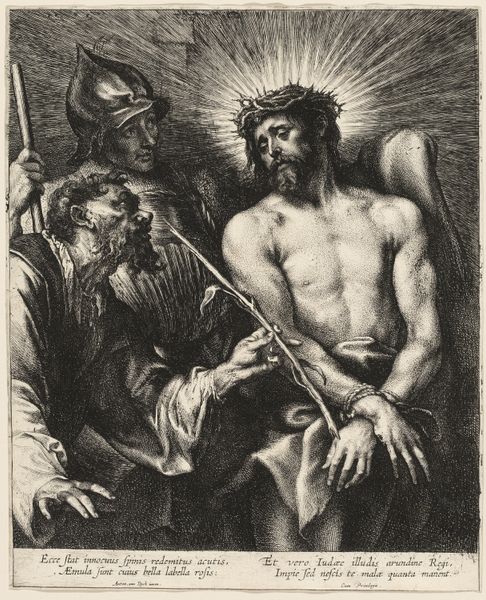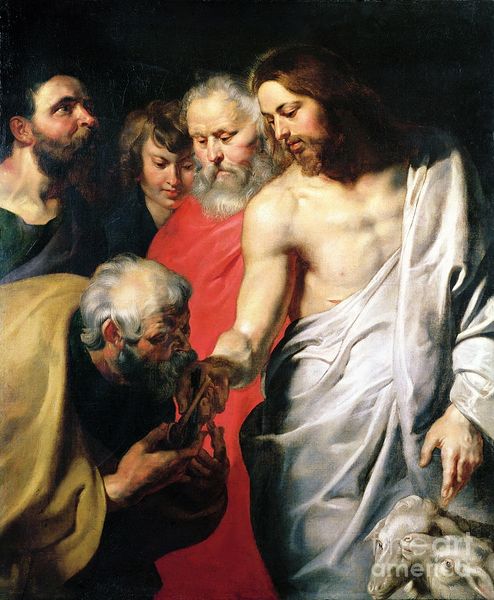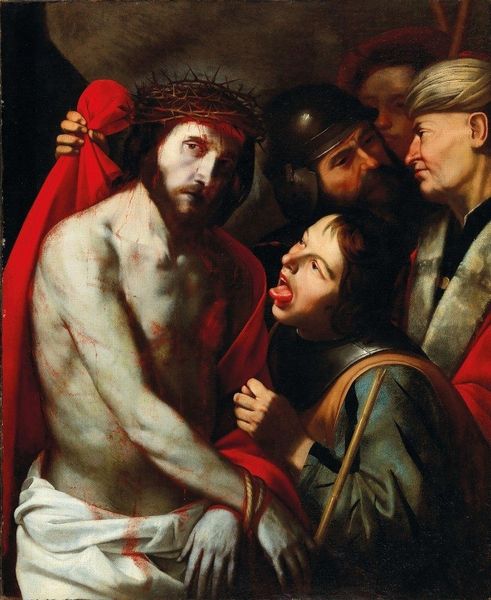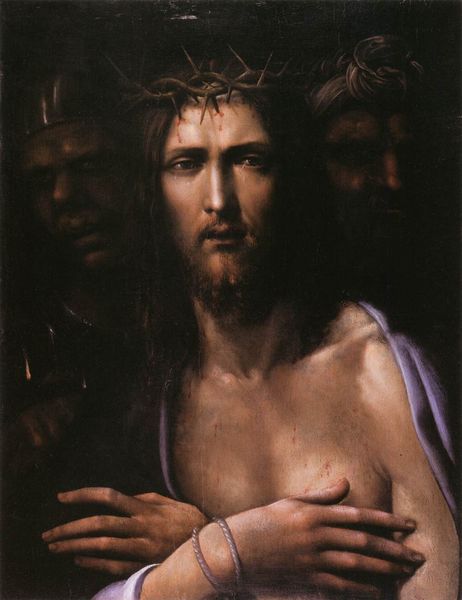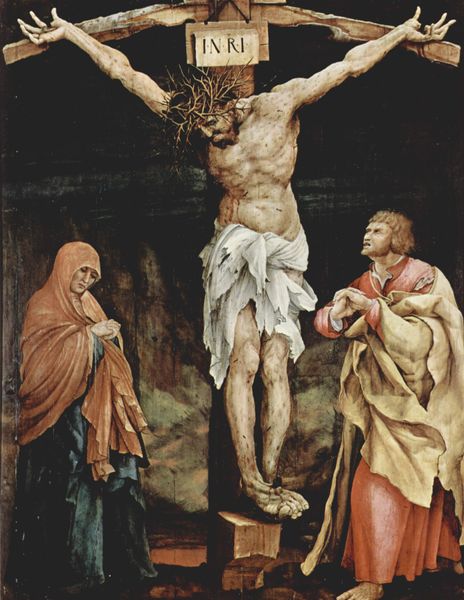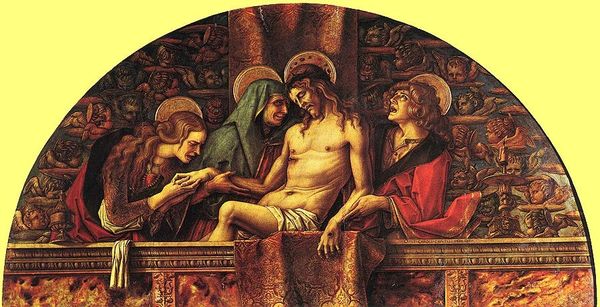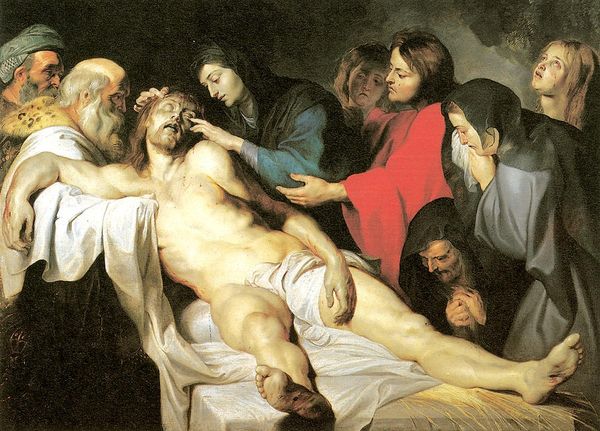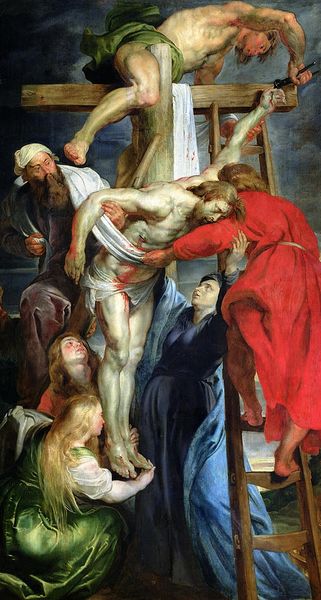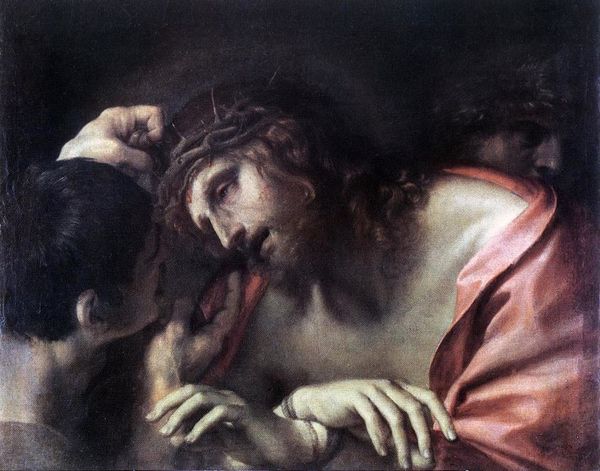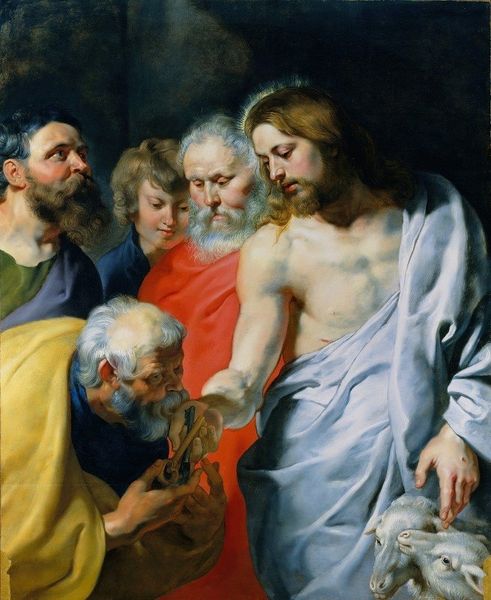
painting, oil-paint
#
portrait
#
baroque
#
painting
#
oil-paint
#
figuration
#
oil painting
#
history-painting
#
portrait art
#
realism
Copyright: Public domain
Curator: This dramatic scene before us is known as "The Doubtful Thomas," attributed to Gerard van Honthorst. I’m immediately struck by the deep shadows contrasting with the almost theatrical lighting of the figures. What are your first impressions? Editor: A probing intimacy comes to mind. Everyone crowds in so close. This staging feels emotionally charged and slightly claustrophobic – especially that piercing light cutting through the darkness. Curator: The psychological weight is certainly palpable. The painting depicts the biblical episode where the Apostle Thomas refuses to believe in Jesus' resurrection until he can physically touch the wounds. Honthorst emphasizes doubt as a precursor to belief. The dark palette evokes uncertainty, but then the figures huddle in that shared light of divine presence. We feel their search for irrefutable evidence, as they collectively lean into understanding the physical and spiritual paradoxes. Editor: Precisely! Honthorst manages to capture that turning point for religious reform—the shift from blind faith toward something tested, seen, proven. Do you see this questioning, in terms of the cultural forces at play? Because religious institutions were losing authority—and demanding proof reflected societal change at large, the push for secularism in many countries. Curator: Undoubtedly. But I also see it reflecting individual spiritual journeys. Notice how Honthorst visually expresses that. Thomas’s hand, a single bright element, entering the wound of Christ. This evokes, symbolically, both Christ’s compassion and the intense scrutiny placed on divinity. He becomes physically accessible—vulnerable, almost—to validate belief. Editor: Interesting perspective. The accessibility creates that tension: divinity entering human understanding but displayed through doubt—a bold proposition that must've struck viewers hard at the time. Curator: The Baroque drama aims to create maximum emotional impact in line with Counter-Reformation aims. Using sharp contrasts of light and dark he literally throws the viewers in the centre of this historical moment—forcing us to partake and to feel a real connection with Thomas, who then represents each and everyone from the masses and their crisis of faith. Editor: It is rather telling, the way Honthorst used a controversial religious moment, like a crisis of belief, as a catalyst to question the values and demands of their culture, offering us now insight to their political discourse, and the public role the art possessed back then. Curator: The painting compels reflection: It bridges historical distance and individual understanding, inviting ongoing discussions about belief, knowledge, and representation. Editor: A powerful invitation indeed. A remarkable demonstration, no less.
Comments
No comments
Be the first to comment and join the conversation on the ultimate creative platform.
